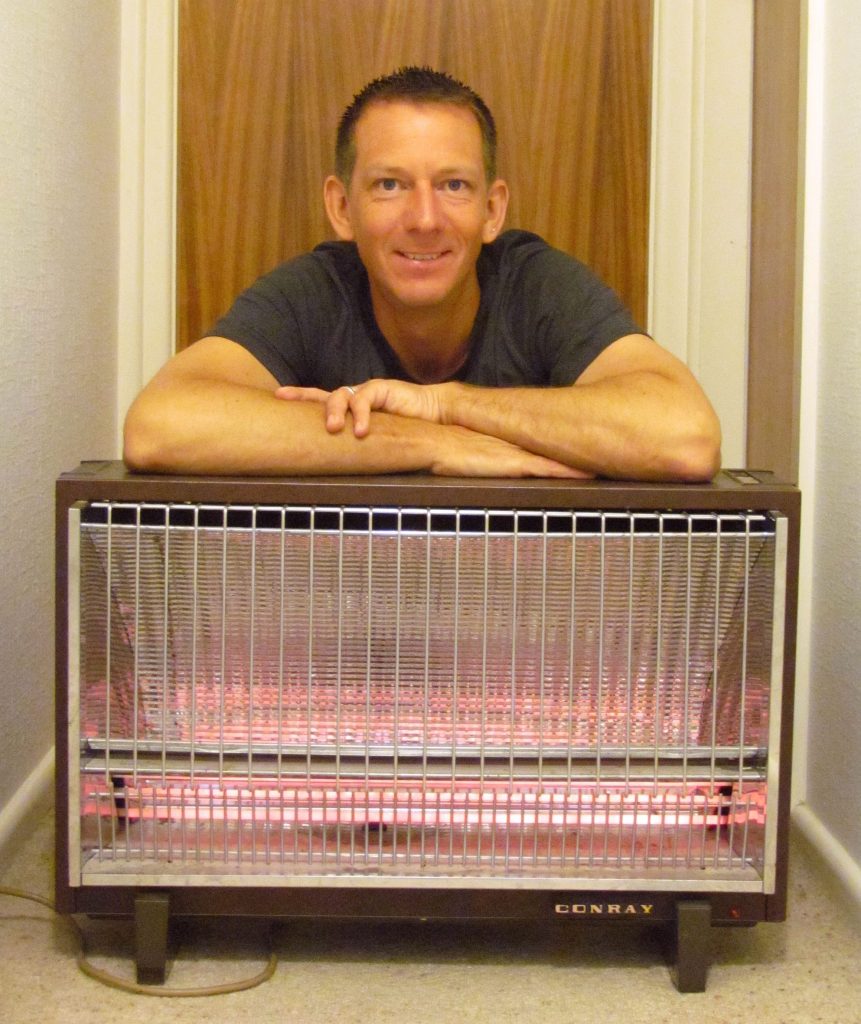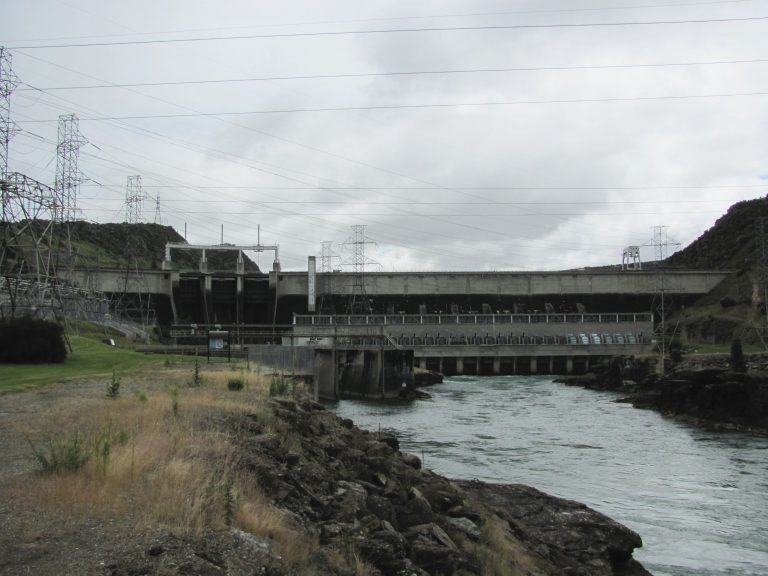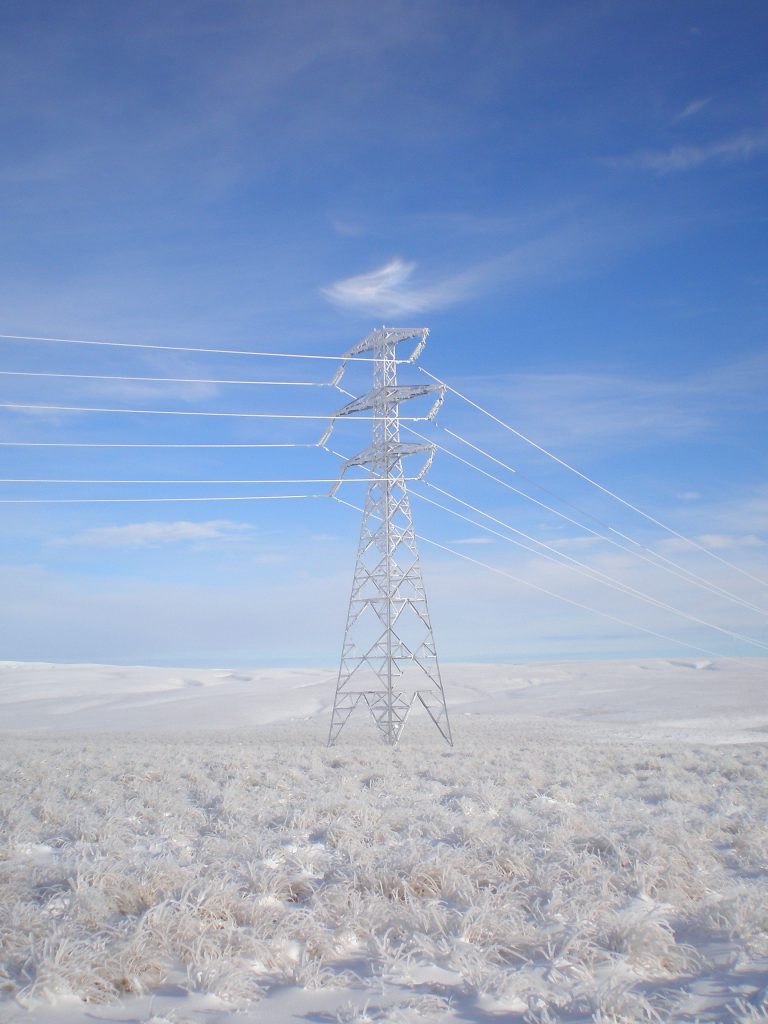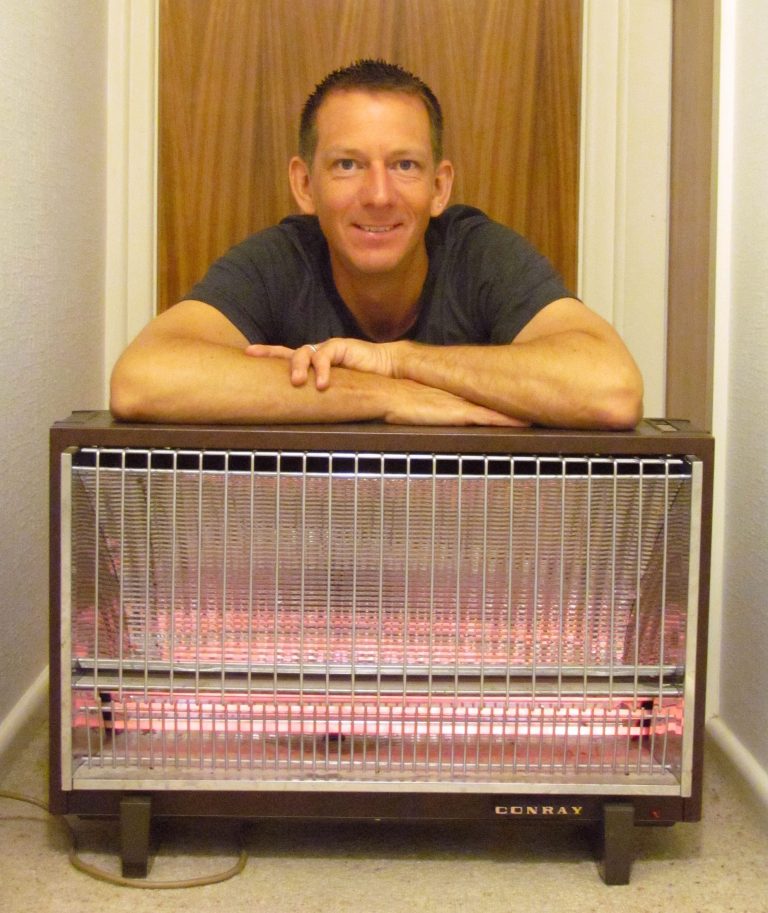Dougal McQueen
Dr Dougal McQueen is a research engineer at the Electric Power Engineering Centre, University of Canterbury, working on the GREEN Grid project. One of the first graduates of the Energy Management programme at University of Otago he has worked as a wind energy engineer on projects in the UK, NZ and Antartica. Dougal grew up in Sawyers Bay, has built a house in Northeast Valley and is a Corporal of the Waitati Militia.

Ask not what the power system can do for you…
Posted on 14 March 2019
by Dr Dougal McQueen
Burning the backs of my legs through wet jeans while sitting on top of the Conray was a moment I was proud to be a New Zealander. Electricity, generated by the mighty Clutha cascading through the turbines of the Roxburgh Dam, conveyed through transmission lines marching across the Lammerlaws and down via distribution lines from Three Mile Hill, and into the radiant coils. The generators, transmission and distribution lines, and heater all owned to some extent by us as part of a proud community.

It is different nowadays. I sit below my heat pump wafted by a breeze of tepid air, missing the radiance of the Conray. And, even with gains in heating efficiency, the cost of power guilts me into shivering in a woolly jumper. My guilt is further fuelled by the knowledge that the marginal power generation capacity is courtesy of the carbon belching Huntly, with the associated transmission and distribution losses. This is worsened when I consider my community’s stake in the system which has changed radically since deregulation and commercialisation resulting in the disenfranchisement that many consumers feel.
Of course my musings don’t do justice to the structure of the power system then or now. The linear system interpretation never did hold and it doesn’t now. One power station does not power one appliance. It is the bringing together of the great diversity of generators and consumers that provides strength and efficiency to the power system. The diversity of generation means that many generators are online at any time with hydro, gas, geothermal, wind and coal in the mix. And, the diversity of loads smooths demand, so that the power system doesn’t need to be big enough to power every Conray in the country at the same time. The power system is enabled by a natural monopoly as it would be inefficient to duplicate transmission and distribution assets, so we are beholden to its commercial structures.

Presently the power system is changing and new technologies could enable me to break free of the monopolies shackles. I could install a power system all of my own using batteries, inverters, photovoltaics and even a locally made wind turbine to send radiant waves via a halogen heater to warm my legs. My legs might be fine for a while but would freeze at the end of a cloudy calm week in winter. And, the financial cost of powering my heater in this way and the cost to the planet from all the embedded carbon burps Made in China is something we all can’t afford.
With these new technologies also comes peer-to-peer (P2P) trading so I could share the costs with my neighbours. However if my neighbours are physically close we will have closely correlated resources; if I am lacking energy they will most likely be in the same boat. During that cloudy calm cold spell we’ll shiver together. And, it is likely I will have a similar demand pattern as our demographics are similar so the benefits of diversity reducing peak demand will not be fully realised so our micro-grid will need to be upsized and hence unaffordable.
We might be saved by the power of the internet enabling virtual neighbours. They could be in windy Wellington while I’m in sunny Dunedin. They might be night owls while I catch worms. However, we could not run our own set of transmission lines across the country lest we cover our beautiful country in a tangled mess of string. Further, the size of the batteries we would need to power ourselves through winter would be inordinate. So I’m back to reliance on the existing power system and being part of a community that includes all generators and consumers who share in the lines charges, commercial architectures and ancillary services.
That all consumers and generators are connected together means the power system has to provide electricity with the same characteristics, or power quality, to all consumers. So while we all benefit through diversity we all must cover the cost of providing the standard of power quality that is demanded by the most critical consumer. The voltage and frequency must be kept within tight bounds so that the most sensitive components, such as the large generators, are not subjected to undue stress. There must be sufficient storage in the hydro lakes and gas reservoirs to power the country through dry winters and if there are faults there must be sufficient reserves to ensure the power stays on to assure Remuera spiffs of their latte. And, if the system does fail there must be systems in place to ensure that the system can be “black started”. All of these elements are bundled into what is termed ancillary services and the costs are shared among consumers.
The concept of ensuring power quality sufficient for the most sensitive consumer could be up for a major change however, with increased demand side management (DSM). New Zealand has been a leader in DSM, using ripple control to interrupt hot water cylinder loads to reduce peak demands. The criticality of the hot water load is low so it can readily be switched off. Now smart meters make it possible to disconnect my home, at times of power shortages, before more critical loads such as the local pub are blacked out. Further, I might opt for a lower tariff and provide my own “security of supply” through batteries or allow my Conray to be switched off before my neighbours Fornite session is cut. Indeed this concept is already forced upon consumers at a large scale through the Automatic Under-Frequency Load Shedding (AUFLS) scheme, whereby the lines companies offer blocks of load that can be lost if the power system security is threatened, and as a small consumers we have little choice in participation. As small consumers we will lose power before the Tiwai pot lines freeze.
The socialism inherent in the power system also ensures that I pay the same lines charges as my neighbour who might live 10km up a tree lined avenue. In the future it may be more efficient for my neighbour to charge their electric vehicle in town, drive home and power their house. However, to ensure the most efficient outcome the economic and regulatory settings must change as these new technologies are adopted. This is already happening for remote connections where power companies can opt to pay consumers to disconnect or can provide stand-alone power systems. Whether power companies should be allowed to cut supply to residents off the Ladies Mile if they do not allow trees to be cut is one in among a host of questions the power system community will be asked.

With all the changes occurring in the power system it is difficult to foresee exactly how my legs will be kept warm. The structure of the community will change and the industry must ensure new technologies are used efficiently and consumers are not disenfranchised to the point where sufficiently resourced individuals reject the power system and go it alone. The strength and efficiency of the power system is gained through the diversity of generators and consumers but this is also its greatest weakness as we all share the fixed costs and are bound by its regulation. Organisations like the Blueskin Resilient Communities Trust [link]are central to hosting discussion that will help direct the evolution of the power system to ensure my legs and everyone else’s are kept warm in a way that is best for the economy, environment and our community.